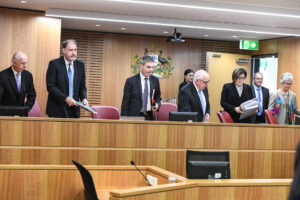Wages are growing the best they have for 11 years, but real wages are now back at the level they were 14 years ago
The good news of the strongest wages growth since 2012, writes policy director Greg Jericho, in his Guardian Australia column, is tempered by the fact that real wages have fallen back to levels last seen in early 2009.
The 3.7% growth in the wage price index demonstrates that workers are finally seeing some return for the tighter labour market in which unemployment is at around 50-year lows. It also reflects that public servants are also becoming free of the wage caps over the past decade that had purposefully kept wages down.
In the March quarter for the first time in more than a decade, public-sector wages grew by 0.9%. Private-sector wages have also grown above 0.75% for 4 straight quarters – the first time since September 2012.
But even with this very good wage growth, workers are seeing their living standards fall. In real terms, wages fell 3.1% in the past year and are now 5.4% below where they were before the pandemic. This destruction of purchasing power will take many years to recover. And it highlights that wages should rise faster than inflation and with workers being the ones who have suffered the most from inflation, they should not be expected to suffer once inflation is back within normal ranges.
Between the Lines Newsletter
The biggest stories and the best analysis from the team at the Australia Institute, delivered to your inbox every fortnight.
You might also like
The Wage Price Index shows pay packets are up. So why doesn’t it feel that way?
The latest figures from the Australian Bureau of Statistics show wages are growing at a reasonable rate, but a deeper look shows a big problem might be about to bite Australian workers.
If business groups had their way, workers on the minimum wage would now be $160 a week worse off
Had the Fair Work Commission taken the advice of business groups, Australia lowest paid would now earn $160 less a week.
The continuing irrelevance of minimum wages to future inflation
Minimum and award wages should grow by 5 to 9 per cent this year



